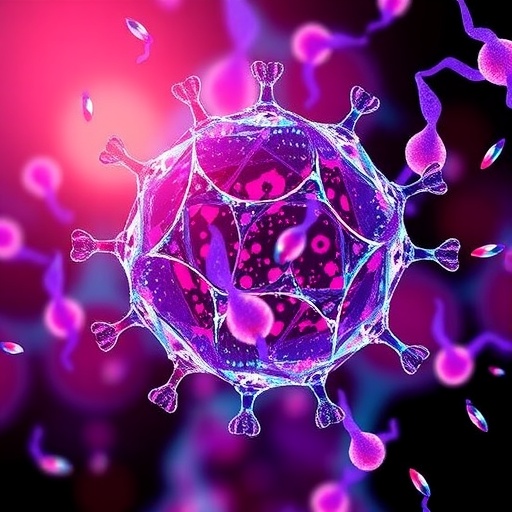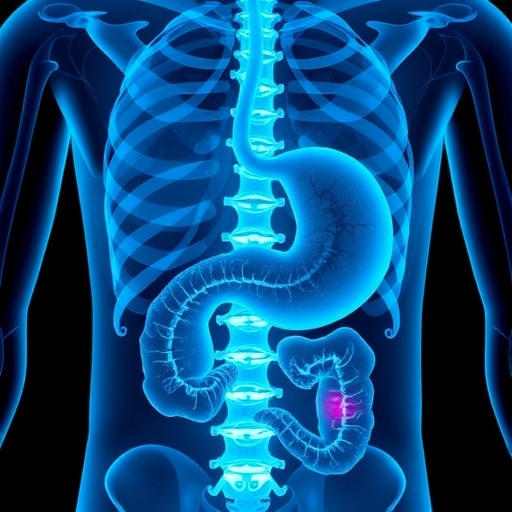Cancer’s relentless capacity to outmaneuver treatment remains one of the most formidable obstacles in modern medicine. Among the most vexing manifestations of this challenge is multidrug resistance (MDR)—a phenomenon wherein tumors evolve the ability to withstand multiple anticancer agents that differ widely in their chemical compositions and therapeutic mechanisms. This sinister adaptability threatens to undermine the effectiveness of systemic therapies that have transformed cancer care over recent decades, including traditional chemotherapies, targeted molecular agents, and the burgeoning class of immunotherapies. Despite significant strides in oncology, MDR emerges as an almost inevitable event during cancer progression or treatment, frustrating clinicians and researchers alike.
The origins of the MDR conundrum date back to the 1960s when scientists first observed that cancer cells exposed to one drug frequently developed the ability to resist other, structurally and functionally unrelated drugs. Since these early observations, our mechanistic insight into MDR has expanded dramatically. We now understand that resistance arises from a complex interplay of genetic, epigenetic, and microenvironmental factors that collectively empower tumors to evade destruction. However, translation of laboratory discoveries into effective clinical interventions remains stubbornly limited, reflecting the intricacy of MDR pathways and the heterogeneity of cancer itself.
At the core of MDR lies a network of cellular defenses. Cancer cells deploy a variety of tactics, including the overexpression of drug-efflux transporters such as P-glycoprotein (P-gp), which function as molecular pumps expelling chemotherapeutics from the intracellular milieu. This barrier drastically reduces intracellular drug accumulation, thereby dampening therapeutic efficacy. Yet, drug efflux is just one piece of the puzzle. Alterations in drug target sites can diminish the binding affinity of therapeutic agents, while enhanced DNA repair capacity allows tumor cells to swiftly mend the genotoxic lesions inflicted by chemotherapy. The integration of these mechanisms orchestrates a formidable resistance phenotype, often with redundant safeguards.
.adsslot_lZ7LwT0kmN{ width:728px !important; height:90px !important; }
@media (max-width:1199px) { .adsslot_lZ7LwT0kmN{ width:468px !important; height:60px !important; } }
@media (max-width:767px) { .adsslot_lZ7LwT0kmN{ width:320px !important; height:50px !important; } }
ADVERTISEMENT
Beyond cancer cells themselves, the tumor microenvironment plays an instrumental role in fostering MDR. Hypoxic conditions, acidic extracellular pH, and stromal cell interactions collectively sculpt a sanctuary that shields malignant cells. These environmental factors modulate drug penetration and metabolic processing, creating physical and biochemical barriers against therapy. Additionally, the dynamic crosstalk between cancer stem cells and their niche bestows further resilience, as these pluripotent cells tend to harbor intrinsic resistance traits and can repopulate tumor mass post-treatment.
Targeted therapies, designed to disrupt specific oncogenic drivers, were initially heralded as a silver bullet to bypass the pitfalls of conventional chemotherapy. While these agents have dramatically improved outcomes for subsets of patients, resistance mechanisms have proven equally adept at emerging in this context. Tumors frequently activate bypass signaling pathways or acquire secondary mutations that render original targets refractory to inhibition. Such plasticity highlights the evolutionary pressures tumors face, selecting clones capable of escaping even the most precise molecular assaults.
Immunotherapy, another revolutionary modality, confronts its own version of resistance. Tumors can modulate antigen presentation, produce immunosuppressive cytokines, or recruit regulatory immune cells that blunt antitumor immunity. The convergence of immunologic resistance with MDR underscores the multifactorial nature of treatment failure and elucidates why combination strategies often become necessary to outwit cancer’s adaptive capacity.
Encouragingly, advances in high-throughput sequencing, single-cell analysis, and proteomics are unraveling the enigmatic heterogeneity underpinning MDR. These technologies illuminate the evolutionary trajectories tumors undertake under therapeutic pressure, revealing subpopulations primed for resistance even before treatment initiation. Such insights pave the way for precision oncology strategies that anticipate and intercept resistance pathways preemptively, rather than reactively responding to clinical relapse.
Translating these molecular insights into effective interventions is a burgeoning priority. Approaches under investigation include inhibitors of efflux pumps, agents targeting DNA repair pathways, and drugs designed to modulate the tumor microenvironment. Moreover, innovative drug delivery systems aim to enhance local drug concentrations and overcome physical barriers imposed by the tumor stroma. Synthetic lethality approaches—leveraging vulnerabilities unique to resistant cells—offer another tantalizing avenue for therapeutic exploitation.
Crucially, overcoming MDR demands a paradigm shift in clinical trial design and drug development. Traditional trials focusing on single agents often fail to capture the complexity of resistance mechanisms or the heterogeneity among patients. Adaptive trial designs incorporating biomarker-driven stratification and dynamic treatment modulation hold promise to accelerate the development of personalized combination regimens that can outmaneuver evolving tumor resistance.
The clinical deployment of combination therapies that integrate chemotherapy, targeted agents, and immunotherapy encapsulates an emerging strategy to surmount MDR. By simultaneously targeting multiple survival pathways and evading resistance mechanisms, such multi-pronged regimens aim to constrain tumor adaptability. Early-phase trials already demonstrate that judiciously designed combinations can elicit deeper and more durable responses, although toxicity management remains an ongoing concern.
Importantly, the fight against MDR transcends pharmacological interventions. Integrating real-time monitoring tools—including circulating tumor DNA analysis and functional imaging—facilitates early detection of resistance emergence. Such approaches enable clinicians to dynamically tailor therapies, potentially forestalling full-blown relapse. The integration of artificial intelligence and machine learning algorithms holds further promise in predicting resistance patterns and optimizing individualized treatment schedules.
Despite these advances, formidable gaps persist in our capacity to conquer MDR definitively. The intrinsic diversity of cancer types and even individual tumors renders a one-size-fits-all solution improbable. Moreover, the evolutionary dynamics within tumors are continuous and often unpredictable, necessitating flexible and adaptive therapeutic strategies. As such, a deeper understanding of cancer ecology—how tumor cells interact with their environment and how selective pressures sculpt evolution—is vital.
Looking forward, the integration of fundamental biological knowledge with cutting-edge technological tools will be critical. Cross-disciplinary collaborations bridging oncology, computational biology, pharmacology, and immunology will accelerate the unveiling of MDR’s multifaceted nature. Equally important is fostering translational pipelines that ensure rapid and rigorous validation of preclinical findings in clinically relevant models and patient populations.
In conclusion, multidrug resistance remains a formidable and dynamic challenge in oncology. While our understanding of its mechanistic underpinnings has expanded remarkably, the translation of this knowledge into effective, durable clinical strategies remains an urgent unmet need. The future of cancer therapy hinges on our ability to anticipate resistance evolution, dynamically counteract adaptive mechanisms, and personalize treatments that not only prolong survival but ultimately achieve durable disease control. Continued innovation, collaboration, and clinical vigilance will be paramount in this enduring battle against cancer’s adaptability.
Subject of Research: Multidrug resistance mechanisms and therapeutic strategies in cancer.
Article Title: Understanding and overcoming multidrug resistance in cancer.
Article References: Ge, M., Chen, XY., Huang, P. et al. Understanding and overcoming multidrug resistance in cancer. Nat Rev Clin Oncol (2025). https://doi.org/10.1038/s41571-025-01059-1
Image Credits: AI Generated
Tags: cancer treatment challengesclinical implications of drug resistanceepigenetic influences on drug resistanceevolution of cancer therapiesgenetic factors in cancer resistanceimmunotherapy and drug resistancemechanisms of cancer drug resistancemultidrug resistance in cancerovercoming cancer treatment barriersresearch advancements in oncologystrategies to combat cancer MDRtumor microenvironment and resistance





